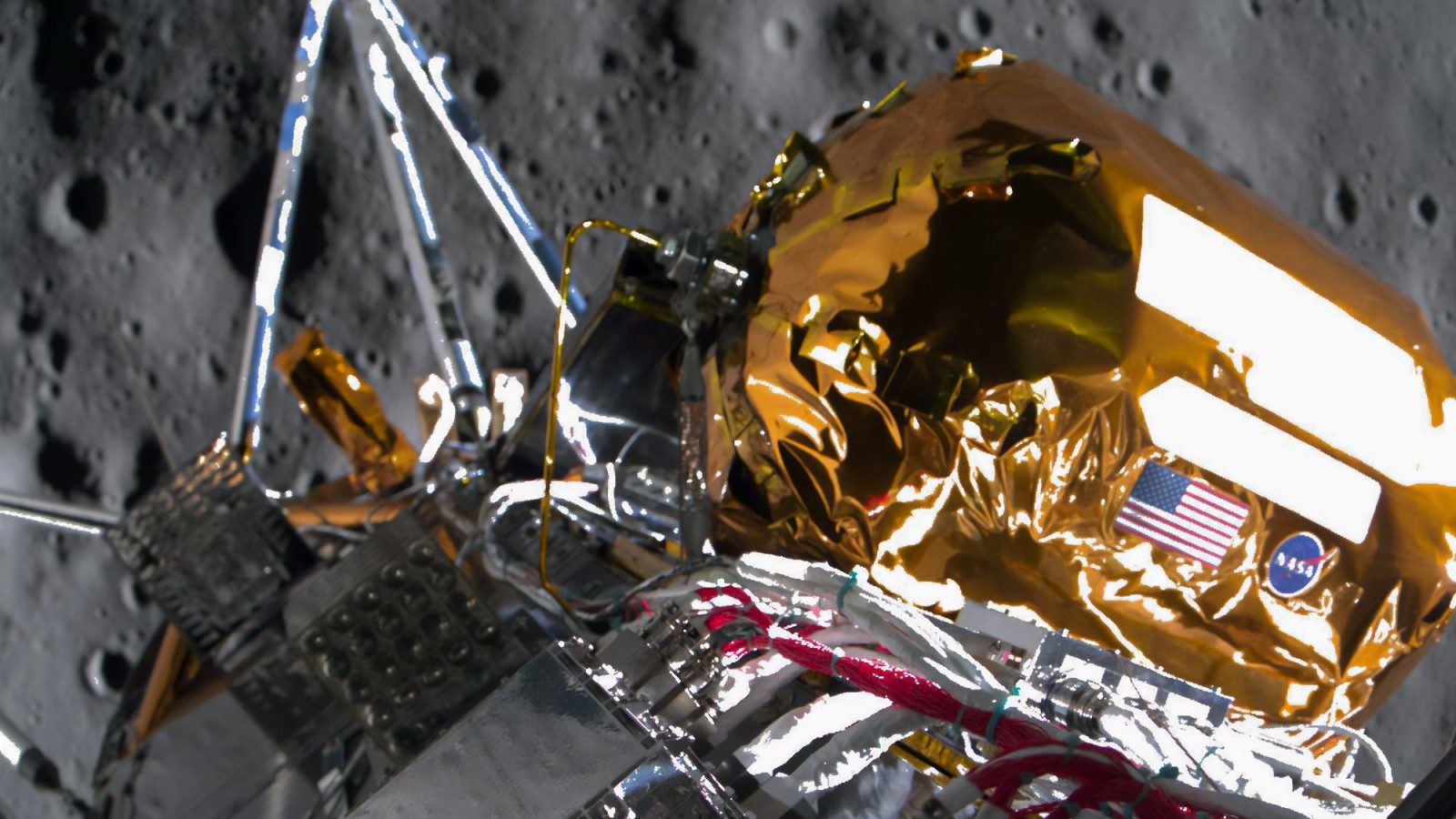
Over the last few weeks we’ve been following the travels of Intuitive Machine‘s IM-1 mission. The first of its kind lander made several firsts, the biggest being bringing the commercial market to the lunar surface for the first time. While the mission has ended for now, there’s a lot to talk about good old Odysseus.
Odysseus was not a perfect mission but it did the job
On February 15, Odysseus began its journey to the Moon launching on a Falcon 9 rocket from the historic LC-39A. This was a unique launch as it saw the first time SpaceX supported fueling of a payload with cryogenic propellent just before launch. This is why The IM-1 mission couldn’t move pads, it required the special hardware.
As Odysseus separated from the Falcon 9 second stage the spaceflight community hung out to see how this one would turn out. Just a few weeks prior, Astrobotic’s first lunar lander suffered an early failure inside its propulsion module. With no other commercial lander having success at the Moon, we were all wondering what would go wrong with Odysseus.
While the IM-1 mission was far from perfect, nothing was able to make Intuitive Machines call off the landing. On February 22, Odysseus softly touched down on the lunar surface, overcoming troubles in its propulsion system, its laser range finder, and other systems along the way.
The laser range finder was actually the biggest “failure” of the mission, with a safety pin accidentally being left in so it was unable to be used. Luckily teams attempted to turn this system on early and discovered the problem with enough time to figure out a solution before landing.
That solution turned out to be a NASA built tech demonstration that used optical cameras to determine the landing spot. Even without its primary landing system, Odysseus managed to land about one mile from its intended location.
Now about that landing, soft wouldn’t be the way I would describe it. However, it did survive its landing. Analysis done by Intuitive Machine engines show that they likely came down too fast laterally. So when one of Odysseus’ landing legs touched the surface, it dug into the regolith and caused the lander to tip over. The tip was not enough to cause any serious damage to lose the mission but it did make the high gain antennas unusable.
While the lean made it difficult to transmit data back to Earth, only being able to use a small low gain omnidirectional antenna. The teams were able to activate all of its science payloads and return data from each of them. Although, the grand total of data returned was only 350 mb, in space terms this is still a lot but most likely no where near the expected outcome for some.
The only payload that did not succeed was a student built deployable camera that was to be deployed just before touchdown to capture those final moments. During the reshuffle of landing systems, Embry-Riddle’s EagleCam was not commanded to deploy. Teams attempted to deploy it while on the ground but it failed to transmit any photos back to Oydysseus.
After a week on the lunar surface, the Sun set on Odysseus. Like other solar panel powered landers the spacecraft is not expected to survive the lunar night. While even Intuitive Machine’s CTO, Tim Crain, won’t tell you to place bets on it, the company will attempt to reach out to Odysseus when the Sun raises again.
Join our Discord Server: Join the community with forums and chatrooms about space!
What does this mean for the future of lunar exploration?
IM-1 scored many first during this mission. Of course it holds the crown for being the first commercial lunar lander to successfully touchdown on the Moon as well as NASA‘s first successful CLPS mission. While there’s still a lot to be proven that NASA can build a commercial lunar market (just because a company proved it can land on the Moon using a NASA fixed price contract and large amounts of private capital doesn’t make it sustainable… yet), it is a great step in the right direction and we’re excited to see what comes next.
Odysseus was also the first spacecraft to fire a methane powered engine out in vacuum and the furthest from Earth to ignite an engine. Also that thing about being the furthest south on the lunar surface to land so far. Lots of first on this mission.
More lunar landers are coming to the Moon with many more other missions in the works to support the potentially growing cis-lunar economy. Artemis and CLPS are leading the way in making what was thought to be impossible possible with building up more commercial space companies in new markets.
FTC: We use income earning auto affiliate links. More.




Comments